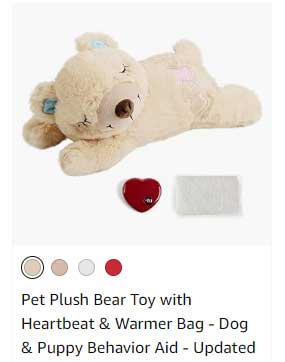As the seasons change, many dog owners find themselves facing a common yet often distressing issue: seasonal allergies.
Just like humans, dogs can experience allergic reactions to pollen, mold, grasses, and other environmental factors.
If your furry friend is showing signs of allergies, it’s important to know how to help them navigate this uncomfortable time.
Here are some practical tips and strategies to support your dog through their allergy struggles.
Understanding Seasonal Allergies in Dogs
Seasonal allergies, or atopy, occur when a dog’s immune system reacts to environmental allergens.
Symptoms can range from mild to severe and may include:
- Itchy or inflamed skin
- Excessive scratching or biting at the paws
- Runny nose or watery eyes
- Sneezing or coughing
- Ear infections
If you notice any of these symptoms, consulting your veterinarian is a wise first step.
They can help determine the underlying cause and suggest appropriate treatments.
Tips for Supporting Your Allergy-Prone Dog
1. Keep Them Clean:
Regular baths can help remove allergens from your dog’s fur and skin.
Use a gentle, hypoallergenic dog shampoo and bathe your pet at least once a week during allergy season.
This not only cleans their coat but can also soothe irritated skin.
2. Limit Outdoor Exposure:
During peak pollen times (usually early morning and on windy days), try to keep your dog indoors.
If they need a bathroom break or short exercise, limit the time outside to minimize exposure to allergens.
3. Clean Your Home:
Keeping your home clean is essential for reducing indoor allergens.
Regular vacuuming, washing your dog’s bedding, and using air purifiers can help maintain a healthier environment.
Have you tried Butternut Box – helps dogs with allergies
4. Paw Care:
Your dog’s paws can collect allergens when walking outside.
To minimize reactions, wipe down their paws with a damp cloth or use pet-safe wipes after outdoor excursions.
Keeping their nails trimmed also prevents them from scratching their skin more than necessary.
5. Nutritional Support:
A healthy diet can enhance your dog’s immune system.
Consider incorporating omega fatty acids, which have anti-inflammatory properties and can promote skin health.
Consult your vet for recommendations on the best diet for your dog’s needs.
6. Identify and Avoid Triggers:
Keep a journal of your dog’s allergy symptoms and note when and where they occur.
This information can help you pinpoint specific allergens so you can avoid them whenever possible.
7. Consider Allergy Medications:
Your vet may recommend antihistamines, corticosteroids, or other medications to help manage your dog’s symptoms.
Always follow your vet’s advice regarding dosages and types of medication.
8. Regular Vet Check-Ups:
Schedule regular check-ups with your veterinarian to monitor your dog’s health.
If their allergies worsen, or if you notice new symptoms, returning to the vet can help address these issues promptly.
9. Explore Immunotherapy:
Allergy testing and immunotherapy (allergy shots) can be beneficial for some dogs.
This treatment gradually desensitizes your pet to specific allergens and can lead to long-term relief.
Ending on a Positive Note
While seasonal allergies can be a challenging issue for both dogs and their owners, understanding how to help your furry friend can make a significant difference.
By taking proactive steps—cleaning your home, providing regular baths, and consulting your veterinarian—you can support your dog in living a comfortable and happy life, even during peak allergy seasons.
Remember, a little extra care goes a long way in making a substantial impact on your dog’s well-being.










